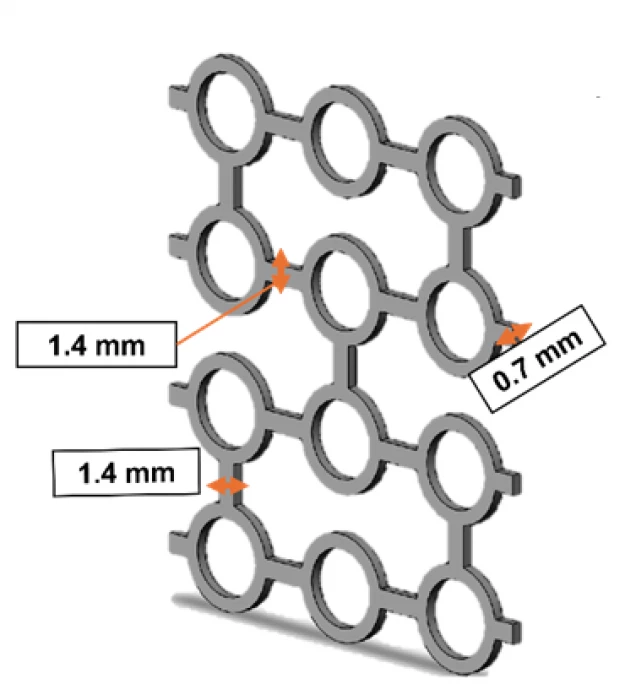University of Coimbra develops biodegradable polymer vascular stents
The groundbreaking approach to developing these medical devices, used to clear blocked arteries, aims to overcome the adverse effects linked to traditional metal stents.
A research team from the Department of Mechanical Engineering (DEM) of the Faculty of Sciences and Technology of the University of Coimbra (FCTUC) has developed an innovative approach to producing biodegradable vascular stents, - medical devices used to keep arteries open after a blockage has been removed.
The breakthrough, published in the journal Bioactive Materials, seeks to overcome the limitations of traditional metal stents, which often cause adverse biological reactions and may lead to the re-obstruction of blood vessels due to excessive cell growth.
"Although metallic stents have a polymer coating that releases drugs to reduce adverse biological responses, the permanent metal structure can still trigger complications once the coating degrades, such as restenosis, which may lead to artery restenosis (when a new blockage occurs) and, in severe cases, heart failure. Additionally, some of the metals used in these devices have low cellular compatibility, increasing the risk of inflammatory reactions and potential toxicity," explains Ana Paula Piedade, professor at the DEM and researcher at the Centre for Mechanical, Materials and Process Engineering (CEMMPRE).
According to the researchers, there has recently been interest in the use of temporary biodegradable stents made from biopolymers rather than petroleum-based materials, which the human body can break down over time. However, they have some limitations, such as being invisible in medical imaging scans due to their similarity to human tissue, making monitoring quite challenging.
To tackle this issue, the team developed the stents using additive manufacturing (3D printing) and cathode sputtering to coat them with biodegradable metals, such as zinc (Zn) and magnesium (Mg).
"The metallic coating has brought significant advances, including radiopacity, which allows the stents to be visible not only during placement but also during medical examinations; antibacterial properties, evaluated in collaboration with microbiologists at CEMMPRE, where the Zn coating was found to be effective against bacterial infections; thrombus reduction, as Zn-coated stents do not facilitate blood clot formation, unlike those coated with Mg; and mechanical improvements, as the Zn coating increases the strength of the stents compared to uncoated polymer models," explain the experts.
The two technologies used - 3D printing and sputtering - are sustainable because they minimise material waste and use energy-efficient processes.
"The next step, subject to funding, will be compatibility tests with human cells, in line with European Union requirements to reduce animal testing. If the results are positive, we hope to move on to clinical trials," the team adds.
The scientific article “Evaluation of the interface of metallic-coated biodegradable polymeric stents with prokaryotic and eukaryotic cells” is available here.
Translation: Diana Taborda [DCOM-UC]


